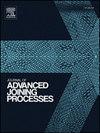Feasibility study of advanced manufacturing processes: Integrating LPBF and LMD for Inconel 718
IF 4
Q2 MATERIALS SCIENCE, MULTIDISCIPLINARY
引用次数: 0
Abstract
Laser hybrid manufacturing combines Laser Powder Bed Fusion (LPBF) and Laser Melt Deposition (LMD) to overcome LPBF's size constraints and LMD's lower geometric precision. This study explores the feasibility of hybrid LPBF-LMD processing for Inconel 718, focusing on interface properties and mechanical performance. Hybrid samples were first fabricated using LPBF, followed by LMD, with LMD process parameters optimized using a second-order parabolic model. Two LPBF variants as-built and solution-annealed were evaluated to assess their influence on interface characteristics. Microstructural analysis revealed a fine-grained LPBF region and a coarser LMD region with distinct texture, both demonstrating defect-free metallurgical bonding. Microhardness measurements showed a gradient at the LPBF interface, increasing from 346 ± 20 HV at the build plate to 410 ± 18 HV, influenced by solidification and thermal gradients. The LMD region exhibited a lower hardness of 314 ± 12 HV, correlating with its coarser microstructure. Tensile tests showed that as-built LPBF-LMD samples had higher elongation (26.76 ± 2 %) compared to solution-annealed samples (8.29 ± 2 %), with the LPBF region contributing more to ductility. These findings provide key insights into optimizing hybrid LPBF-LMD processing for high-performance components, enabling improved repair strategies and multifunctional part design in aerospace, energy, and other critical applications.
先进制造工艺的可行性研究:针对铬镍铁合金 718 整合 LPBF 和 LMD
激光混合制造将激光粉末床熔合(LPBF)和激光熔体沉积(LMD)相结合,克服了LPBF的尺寸限制和LMD较低的几何精度。本研究从界面性能和力学性能两方面探讨了混合LPBF-LMD加工Inconel 718的可行性。混合样品首先采用LPBF制备,然后采用LMD制备,LMD工艺参数采用二阶抛物模型优化。对构建的两种LPBF变体和溶液退火进行了评估,以评估它们对界面特性的影响。显微组织分析显示,细粒LPBF区和较粗的LMD区具有明显的织构,均显示无缺陷的冶金结合。显微硬度测量结果显示,受凝固梯度和热梯度的影响,LPBF界面处存在梯度,从构建板处的346±20 HV增加到410±18 HV。LMD区的硬度较低,为314±12 HV,显微组织较粗。拉伸试验表明,LPBF- lmd试样的伸长率(26.76±2%)高于固溶退火试样(8.29±2%),且LPBF区域对延性的贡献更大。这些发现为优化高性能部件的混合LPBF-LMD加工提供了关键见解,从而改善了航空航天、能源和其他关键应用中的维修策略和多功能部件设计。
本文章由计算机程序翻译,如有差异,请以英文原文为准。
求助全文
约1分钟内获得全文
求助全文

 求助内容:
求助内容: 应助结果提醒方式:
应助结果提醒方式:


